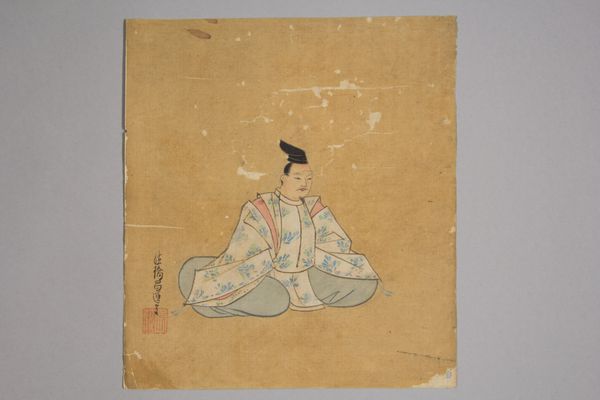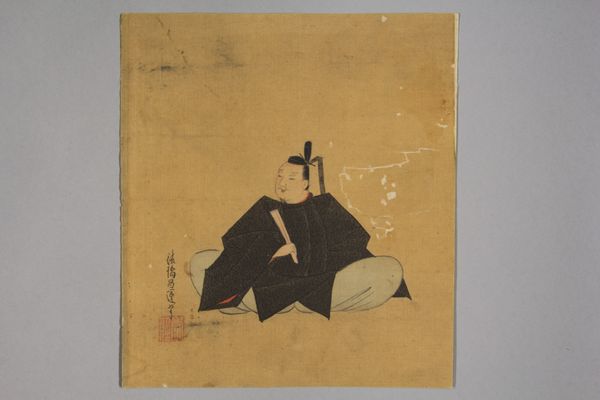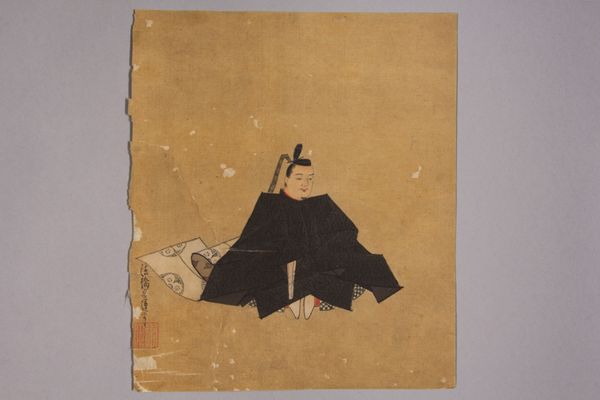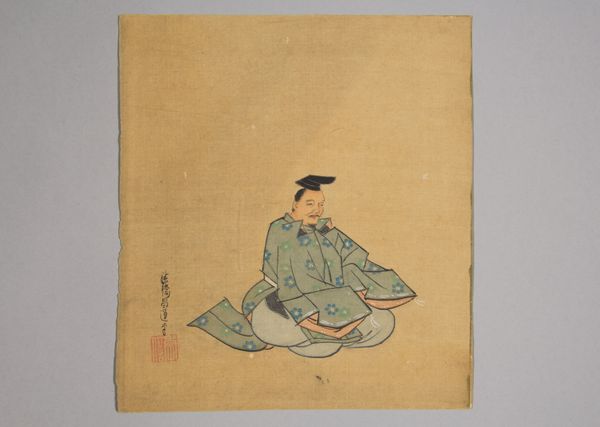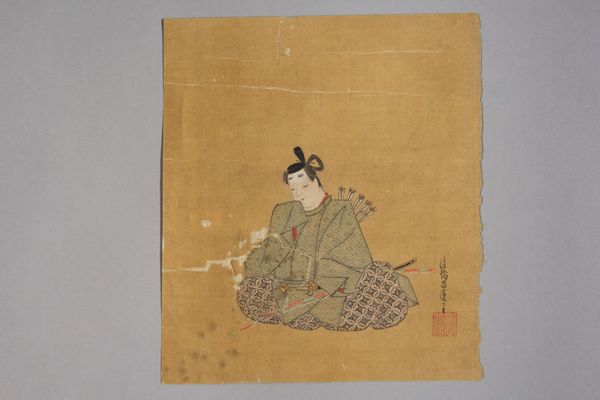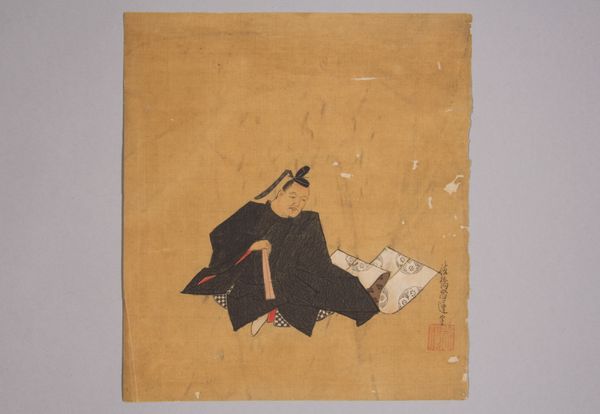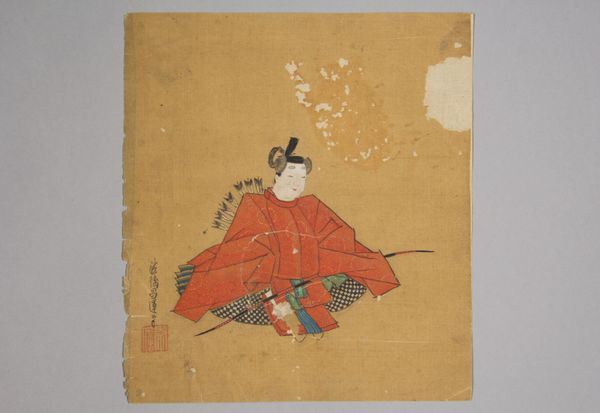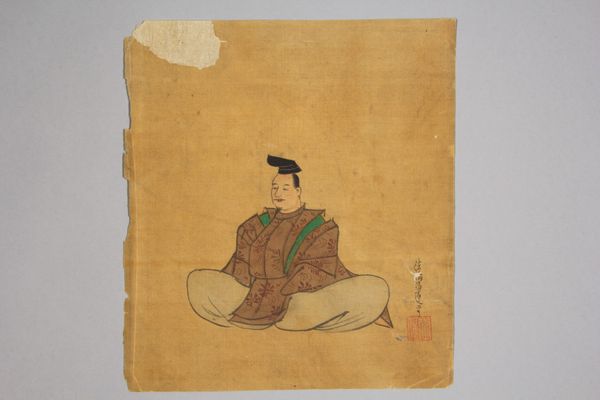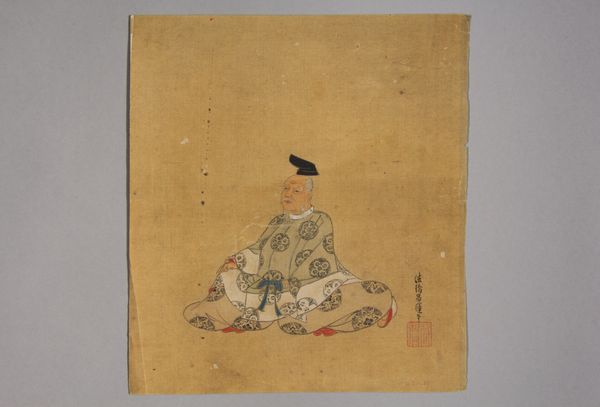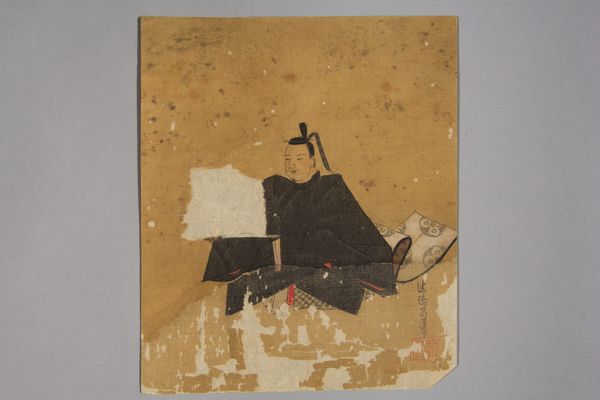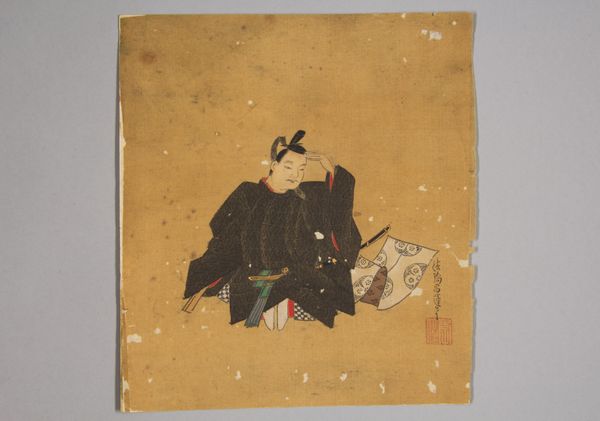
painting, watercolor
#
portrait
#
toned paper
#
water colours
#
painting
#
asian-art
#
figuration
#
watercolor
#
yamato-e
Dimensions: 7 1/4 × 6 1/2 in. (18.4 × 16.5 cm)
Copyright: Public Domain
Curator: There's such a quiet thoughtfulness about this piece. It's called "Immortal Poet" and was created by Kano Shōun sometime in the 17th century. The work utilizes watercolor and delicate strokes to capture, well, a poet. Editor: He does look lost in thought. There’s something quite reserved about his posture, almost like he's guarding his inner world from prying eyes. The palette is muted—earthy paper punctuated by somber blues, greens and a glimpse of scarlet lining of the sleeves—lending a melancholic air to the entire scene. Curator: That melancholic air likely connects to the prevailing artistic trends of the time. During the 17th century in Japan, we see a rising interest in portraiture celebrating individual expression but always mindful of its place within a societal framework. Shōun was very prolific in both Buddhist paintings and portraits. I wonder if he was ever aware of what kind of immortalisation he was creating in portraiture. Editor: A very good question! It's interesting to consider the poet's pose as well – he's neither holding a brush nor gazing skyward for inspiration, but looks humbly down with his hands clasped together, more like he's offering us some kind of insight, and inviting us into his realm of creation. Curator: And perhaps his 'immortality' lies precisely in this invitation to contemplate, to ruminate with him over the ephemerality of existence and power of creative insight to push back. The poem he is reciting may even still be shared today. Editor: Absolutely, that gesture is almost ritualistic, isn’t it? Poets and writers, as seen and defined in social spaces are forever caught between the personal and the public gaze, performing themselves, performing ideas. Shōun’s treatment isn’t reverential exactly but carefully acknowledges this double position. Curator: This "Immortal Poet" by Kano Shōun invites us to think more on who is memorialised and how it relates to ourselves. Perhaps thinking more about societal expectations, versus how we as individuals think of our creative selves? Editor: Precisely! It is a powerful consideration. Thinking of how those historical expectations continue to affect creatives working today!
Comments
No comments
Be the first to comment and join the conversation on the ultimate creative platform.
